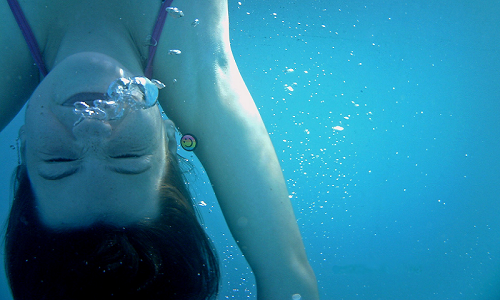Articles, Breath Holding
Science uncovers the secret of shallow water blackouts
The risk of shallow water blackouts has been common knowledge for free divers and spear fishers. However, it was never really clear why this would occur right after coming to the surface and not in the comfortable depths of the ocean or, by lack of one, swimming pool.
60 feet under the sea
It was a tricky feat to pull off but a group of scientists from New Zealand have found a scientific explanation for this phenomenon.The hypothesis is that the oxygen levels in the body increase rapidly as a result of the compression of the lungs. As you descend deeper, pressure builds up with noticeable effects on human physiology.As a free diver holds their breath and descends, one would expect that the oxygen levels in the body would drop as a result of oxygen use and lack of supply. It has therefore always been a mystery why you feel great underwater but things can go awry quickly as you make your ascent to the surface.So – when you are on the bottom, you may actually feel on the top of the world as a result of high oxygen levels. But, as Dr. Simon Mitchell of the University of Auckland explains, as you come to the surface, the lungs expand and the oxygen levels fall rapidly – creating the potential for a blackout.The proof is in the oxygen
The main challenge was to find scientific proof that would collaborate the observations. In order to find out what happens to the oxygen levels of a diver underwater, the team of scientists had to take blood samples 60 meters below the surface.The persistence and grit of the Kiwi scientists paid off. The samples taken from the cold depths of Lake Taupō collaborate the theory that oxygen levels are still high during the descent; and drop rapidly when you ascend to the surface.The research provides invaluable information that will be used to educate divers and aspiring divers why shallow water blackouts happen – and how to prevent them. (Source)Breatheology Courses
Learn and master conscious breathing through our online breathwork courses. Discover how simple yet powerful breathing techniques can help reduce stress, improve your mental clarity, and boost your physical performance.
Free Breathwork Courses
Kickstart your breath training journey with our free, step-by-step breathing programs designed to help you improve lung capacity, manage stress, and build focus.
Advanced Breathwork Training
Take your breathing mastery to the next level with our advanced breathwork training programs. Build resilience, enhance your endurance, and unlock greater physical and mental performance.
